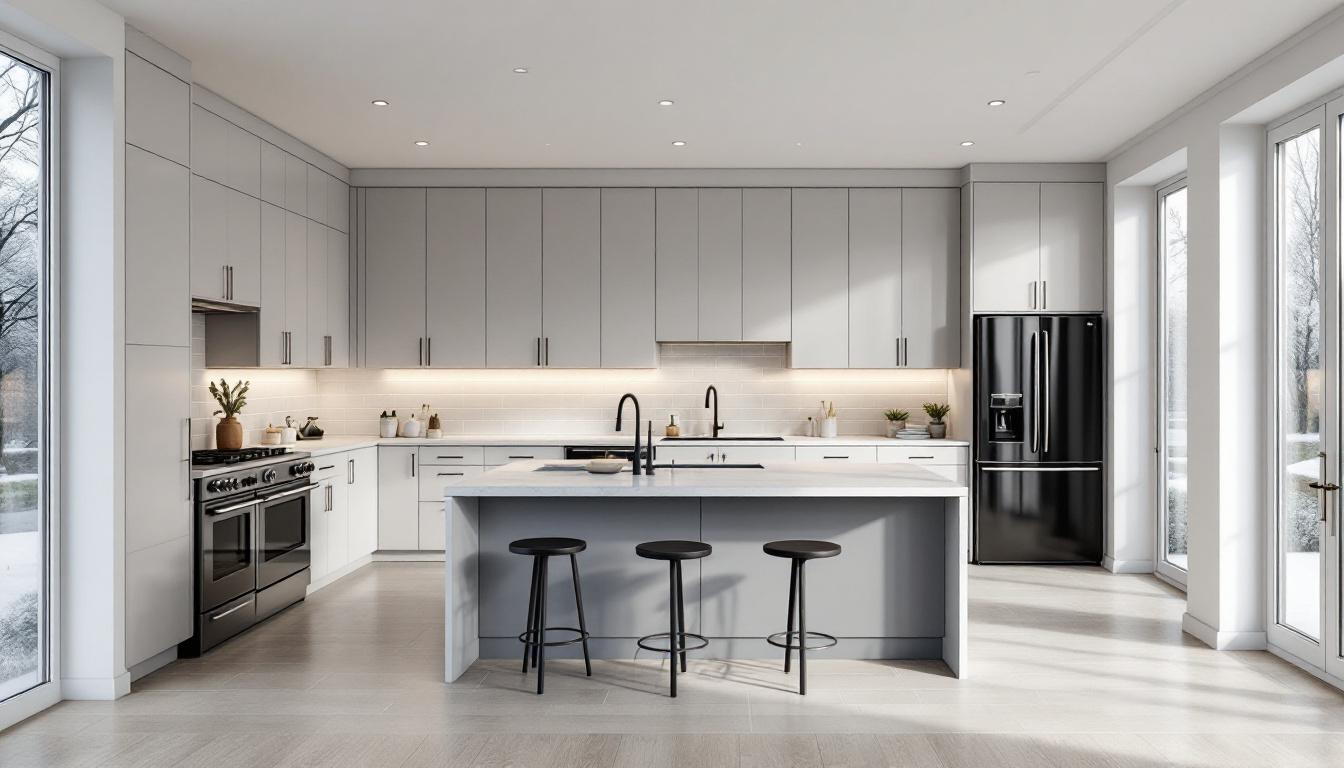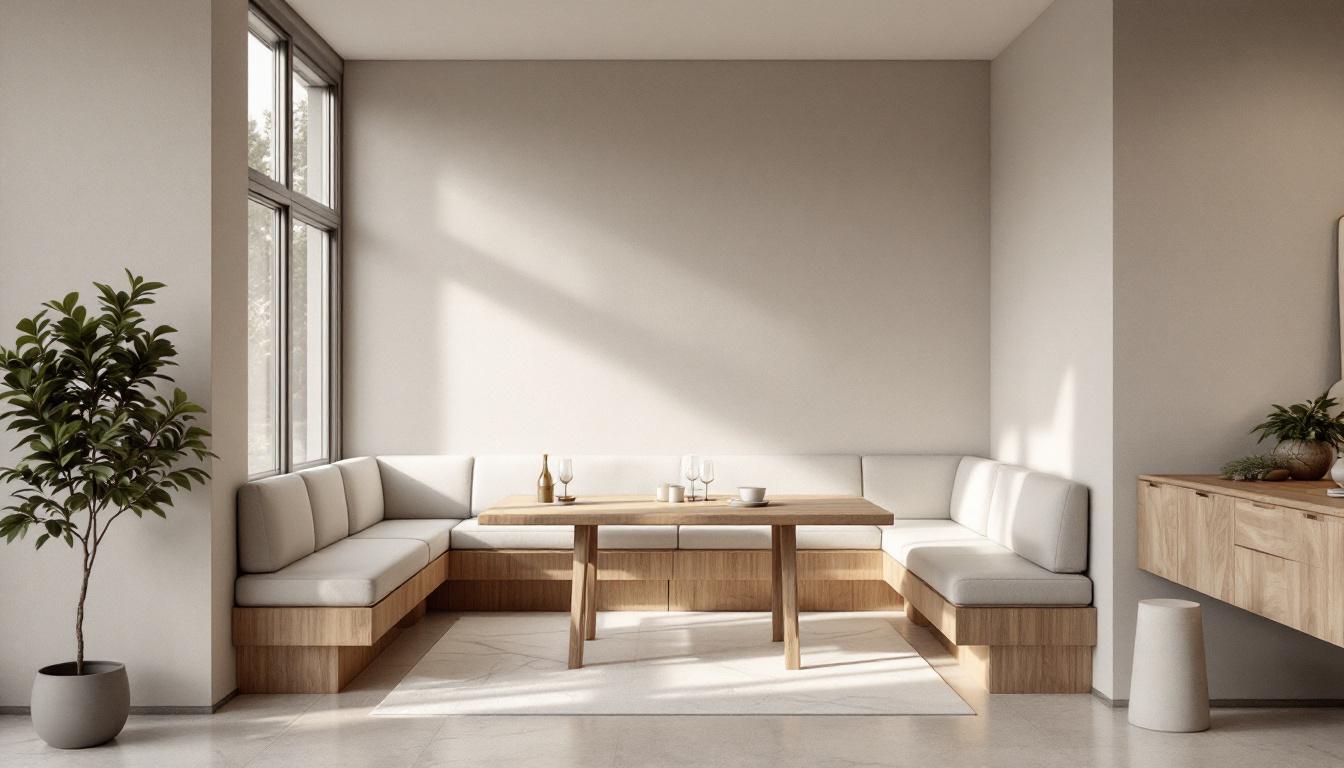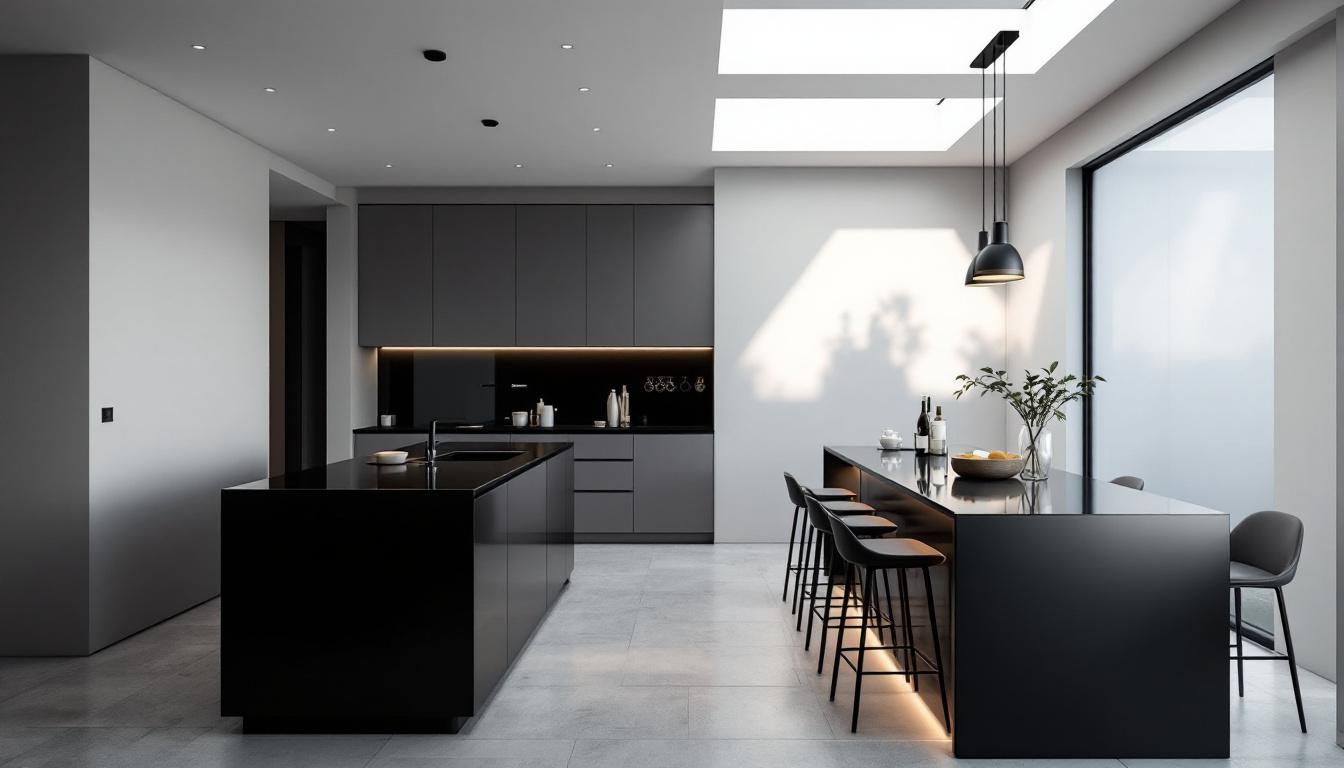In modern home design, minimalist lighting is favored in luxury settings for its ability to create serene and uncluttered spaces. Soft, natural lighting and recessed utility lights, and other minimalist lighting techniques, emphasize clean lines, muted tones, and simplicity.
This gentle approach to lighting has the power to transform any rooms into a calm, harmonious environment without sacrificing practicality.
While home designs are trending away from overly neutral palettes towards bolder arrangements that make a statement, minimalist lighting continues to offer both functional and attractive options for luxury homeowners.
Why Luxury Homes Are Choosing A Minimalist Approach To Lighting
Luxury interior designers love minimalist lighting for creating serene spaces. The design style, rooted in Japanese Zen principles, creates open, serene spaces that benefit from subtle illumination choices.
Trends in Minimalist Lighting
LED fixtures with clean geometric shapes integrate easily into minimalist designs. Metal and glass materials are popular in current arrangements, with fixtures serving as subtle artistic statements rather than elaborate centerpieces.
Monochromatic colors work well in matte black pendant lights or brushed nickel sconces. Smart lighting technology enhances minimalist designs, tapping into their modern feel and enhancing it with futuristic functionality.
The trend emphasizes quality craftsmanship over quantity of fixtures. Single statement pieces replace multiple decorative elements, creating focal points while maintaining visual calm.
Minimalist Lighting Guide
LED lighting is ideal for minimalist spaces offering both natural-like illumination and superior energy efficiency. LED fixtures last up to 25 times longer than traditional options while consuming 75% less energy.
Some of the most popular materials for minimalist lighting fixtures include:
- Brushed metals (steel, aluminum, nickel)
- Clear or frosted glass
- Natural wood accents
And the best placements focus on three key areas:
- Recessed ceiling lights (ambient light)
- Simple wall-mounted fixtures (task lighting)
- Pendant lights (focal points)
The key lies in selecting pieces that complement rather than compete with the space’s overall design. Each fixture fills a role, without unnecessary embellishments, to fulfill your lighting needs without drawing attention to itself.

Minimalist Lighting Design Principles
Minimalist lighting design combines essential functionality with clean aesthetics to create serene living spaces. The core principles focus on geometric shapes, neutral colors, and purposeful placement of light sources.
Minimalism and Modern Lighting
Modern minimalist lighting embraces simple geometric forms like circles, squares, and triangles as foundational elements. These basic shapes create visual interest while maintaining clean lines and understated elegance in any room setting.
LED technology plays a central role in minimalist design, offering slim profiles and superior light quality that mimics natural illumination. The integration of smart lighting systems adds flexibility without compromising the clean aesthetic.
Glass and metal finishes dominate minimalist fixtures, featuring polished surfaces that create clean reflections and complement existing color schemes. These materials enhance the sophisticated simplicity that defines minimalist spaces.
Types Of Lighting Fixtures for Minimalist Spaces
Wall sconces turn into blank walls into artistic statements while providing functional illumination. Simple pendant lights complement modern kitchen and dining layouts, marking zones without visual clutter.
Table lamps with exposed bulbs offer both task lighting and decorative elements in bedrooms and living spaces. Floor lamps with clean lines provide additional lighting layers while maintaining visual harmony.
Key characteristics of minimalist fixtures include:
- Slim profiles with minimal ornamentation
- Neutral color palettes
- Clear purposes for each light source
- Simple metallic or glass finishes
- LED integration for modern efficiency
Setting The Scene With Minimalist Lighting
Light control systems enhance the functionality of minimalist spaces through adjustable brightness levels. Dimmer switches allow for mood adaptation while maintaining the clean aesthetic principles.
The strategic placement of fixtures creates distinct lighting zones without overwhelming the space. Each light source serves a specific purpose, from task lighting in work areas to ambient illumination in living spaces.
Color selection plays a crucial role, with white, black, and metallic finishes dominating the palette. These neutral tones blend seamlessly with existing décor while reinforcing the sophisticated simplicity of minimalist design.
Lights With Minimalist Designs
Minimalist lighting fixtures combine clean lines with purposeful design to create uncluttered illumination. These fixtures emphasize function while maintaining a sophisticated aesthetic through simple geometric forms.
Floor Lamps
Floor lamps in minimalist designs feature slim profiles with straight lines or subtle curves. These versatile pieces provide focused task lighting while taking up minimal floor space. Modern floor lamps incorporate LED technology for energy efficiency and slim configurations.
The most effective minimalist floor lamps use neutral finishes like:
- Matte black metal frames
- Brushed nickel stems
- White or clear glass shades
Chandeliers
Minimalist chandeliers emphasize geometric shapes through clean lines and simple forms. These fixtures create visual impact through their understated design rather than ornate details. LED-integrated chandeliers offer slim profiles while providing ample illumination.
Key features include:
- Linear metal frames
- Glass globes in symmetrical arrangements
- Monochromatic color schemes
Pendant Lights
Pendant lights in minimalist style showcase basic geometric forms like spheres, cylinders or cones. These fixtures work particularly well above kitchen islands and dining areas. Simple glass or metal shades direct light downward while maintaining visual harmony.
Popular minimalist pendant characteristics:
- Single-bulb designs
- Clear or frosted glass
- Industrial-inspired metal finishes
Sconces
Wall sconces in minimalist designs provide focused lighting zones through understated forms. These fixtures mount flush to walls, creating clean sight lines throughout spaces. LED sconces offer slim profiles that complement architectural features.
Essential elements include:
- Indirect lighting options
- Simple metallic finishes
- Geometric shade designs
Recessed Lights
Recessed lighting creates seamless illumination by sitting flush with the ceiling surface. These fixtures distribute even light while maintaining clean visual lines. The unobtrusive design makes rooms feel larger without sacrificing functionality.
- Enhanced spatial perception
- Uncluttered ceiling views
- Versatile placement options
- Focused architectural highlighting

Using Natural Light In Minimalist Designs
Natural light serves as the cornerstone of minimalist design, creating open spaces while maximizing illumination through strategic architectural elements. Floor-to-ceiling windows eliminate boundaries between indoor and outdoor spaces, allowing light to reflect throughout the interior.
How To Increase Natural Light In Your Home
Strategic window placement transforms living spaces into light-filled sanctuaries. Tall windows with high head heights enhance light penetration, while uniform horizontal ribbon windows distribute illumination evenly across rooms.
South-facing windows offer consistent daylight throughout the year, creating bright naturally-lit spaces. Installing skylights and sun tunnels channels light into hard-to-reach areas, while atriums distribute illumination across multiple floors.
Reflective surfaces like white walls amplify natural light throughout spaces. Light shelves and passive daylighting systems further optimize sunlight distribution, creating dynamic patterns that add subtle visual interest without compromising minimalist principles.
Health Benefits Of Natural Light
Natural light exposure triggers essential biological processes that enhance wellbeing. Sunlight stimulates serotonin production, elevating mood and promoting emotional stability throughout the day.
The presence of natural light helps regulate cortisol levels, creating a calming environment that reduces stress and anxiety. This hormone balance improves mental clarity and makes daily challenges more manageable.
Proper exposure to natural light enhances:
- Sleep quality through circadian rhythm regulation
- Vitamin D production for bone health
- Cognitive function and memory retention
- Overall productivity and focus
- Physical and mental energy levels
The dynamic interplay between natural light and minimalist design creates spaces that promote both aesthetic beauty and optimal health conditions. Strategic placement of windows and light-enhancing features transforms ordinary rooms into rejuvenating environments.
Minimalist Lighting Ideas That Fit Your Home
With these minimalist lighting ideas for inspiration, when lighting your own living spaces, you can combine techniques to achieve a design that’s unique and personalized to your tastes.
The key to successful minimalist lighting lies in lighting fixtures that fit your home’s aesthetic while balancing form and function without appearing uninteresting and dull.
Subtlety is key here, and the stakes are high, because broad, open spaces are natural in luxury designs but minimalism can easily appear understated, detracting from the look and value of a high-end home.
For more inspirational posts like this one, follow us on Flipboard and Pinterest where we share and curate tons of content about home design -from interiors to exteriors and beyond.

